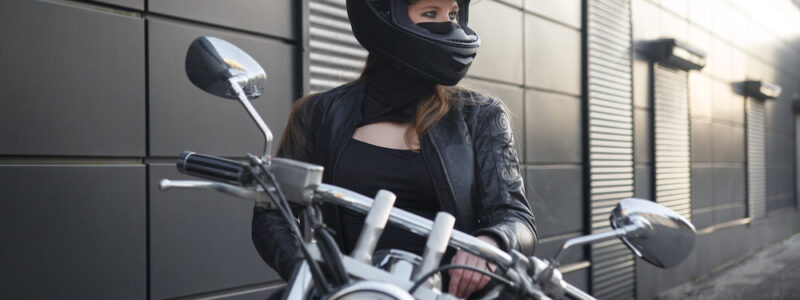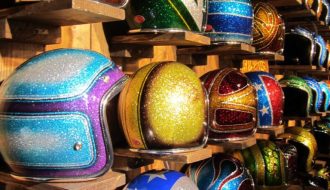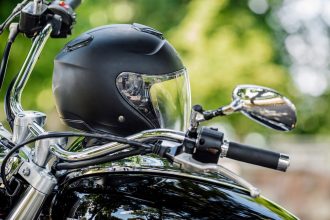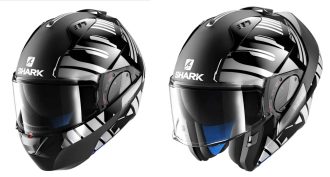When riding your motorcycle in an open area, it’s common for people with long hair to have challenges focusing on the road.
Inconveniences such as obstructed view and itching can easily turn a fun ride into an annoying experience.
Frizzy hair and scalp problems are also common and can affect your appearance and hygiene.
For these reasons, it’s a good idea to learn how to put on a motorcycle helmet with long hair.
How To Put On A Motorcycle Helmet With Long Hair
The first consideration for riders with long hair is finding a helmet that fits properly.
Always use hair care products like shampoo and conditioner because they can be helpful in the prevention of hair damage and dryness.
As you may know, long hair is more susceptible to these conditions due to its volume.
In relation to that, never put on a helmet while your hair is still wet. Instead, moisturize it by using products.
Is your long hair still making your motorcycle rides unpleasant after following these tips?
Here are the most effective ways of managing long hair when riding to have a more enjoyable ride.
Motorcycle Balaclava
Balaclavas, commonly referred to as ski-mask or skull caps, are close-fitting headwear that conceals the head and lower portion of the face.
While you can and should use them for a variety of activities, like snowboarding or skiing, riding a motorcycle is one where they are most significant.
Wearing a motorcycle balaclava will ensure warmth, comfort, and hair and helmet pad protection.
Specifically, a motorcycle balaclava allows you to protect yourself from the elements, such as wind, dust, snow, and UV rays.
It will not only speed up your hair prep time but will also provide adequate protection from exposure.
Wear it before putting on the helmet to shield your hair, scalp, and neck from various environmental conditions.
If you’re into dirt biking, putting on this accessory is probably the most recommended way of protecting your long hair.
You’ll probably have messy hair afterward, but it will effectively make your ride more seamless.
Helmet Liner
Another way of managing your long hair while wearing a helmet is by using a helmet liner. It is simple to apply and keeps your hair from tangling while riding.
Besides its primary purpose, a helmet liner can conceal a bad hair day.
The high-quality ones offer friction absorption when the hair constantly rubs on the helmet pads. Otherwise, the friction could result in hair damage.
To use a helmet liner, put it over the head and ensure that the whole hair is covered.
Then, grab the two ends and tie them behind the neck.
After that, wrap the hair ends around the bun and bind them securely via a half knot or leave some hair out if you prefer.
Low Bun
Doing a low bun is one of the most popular ways on how to put on a motorcycle helmet with long hair.
Tying the hair in a low bun can be an effective, simple method for keeping them from flying around.
As a result, it will allow you to enjoy the ride with fewer distractions.
You can make a low bun by straightening your hair using a comb or brush and then tying it securely in a low ponytail.
After that, lock the hair together with a rubber band and slip the end beneath the base of the ponytail.
You may use another rubber band to secure the hair firmly. Alternatively, bobby pins are also an option to make the bun more secure.
The bun firmly binds all of your hair and allows you to wear a helmet without messing with your hairdo.
Furthermore, you may perform a low bun in combination with some hair serum to ensure the hair is low enough to allow easy helmet adjustment.
Braids
Braids are typically associated with women riders, but it’s also not unusual for men to braid their long hair due to some key benefits.
Believe it or not, braiding the hair is a recommended method of managing long hair when motorcycle riding.
You can rely on it to firmly gather the hair in a manageable state and fit nicely in the helmet.
Leaving the braid visible under the helmet is also an option to make the look appear more distinct.
Aside from when wearing a helmet, braids are helpful because they could promote your hair to grow faster than usual.
They also keep some moisture in the hair and scalp, which prevents dryness.
Overall, long braided hair is classic yet practical because it holds the hair in place.
It also reduces the possibility of the wind blowing them in multiple directions.

Ponytail
If you have straight hair and want to keep them unaltered before and after wearing a helmet, a ponytail is probably your best bet.
A ponytail on long hair is a simple and convenient way to manage the hair before wearing a helmet.
Similar to a low bun and braids, a ponytail may be able to keep long hair from flying away during the ride.
As a result, the air will not affect them, and they will maintain most of their “pre-helmet” condition.
If you’re using a motorcycle for commuting, doing a simple ponytail will help you manage long hair quickly and without the use of accessories.
Put The Hair On Top
Another easy but less fashionable way of wearing a helmet is simply piling the hair on top before putting it on.
It might be a good idea to use a rubber band or bobby pins to lock the hair in place. Otherwise, the hair can look messy once you remove the helmet.
Slowly remove the rubber band or bobby pins to ensure that the hair remains manageable after the ride. Then, comb the hair properly until you’re satisfied with the style.
Care For A Hair Trim?
Wearing a motorbike helmet with long hair is not always ideal because you have to make some adjustments to manage it.
We’ve covered some tricks to ease these challenges. That said, the most practical solution, which many long-haired riders may be unlikely to agree with, is to trim the hair.
Regardless of means, tucking long hair inside the helmet before each ride can be cumbersome and time-consuming, reducing the enjoyment of riding a motorcycle.
We hope you find this information helpful. If you would like to support this site, you can by purchasing through recommended links on the page. Should you decide to purchase, we may earn a small percentage of the sale at no cost to you.
Thank you for your support.
Looking for a Replacement Helmet? Here’s a Recommendation
| Best Full-Face Motorcycle Helmet | Price | Rating |
|---|---|---|
| 5/5 rubber chickens | ||
| 4.8/5 rubber chickens | ||




















